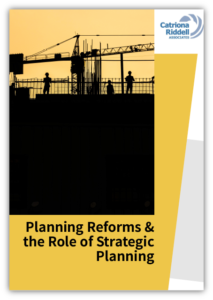
CCN Latest News, CCN News 2021 | 12 March 2021

The CCN hosted a webinar today which you can watch here featuring high profile speakers and experts, which will discuss the merits of strategic planning, and has launched a campaign video outlining ‘Strategic Planning Advisory Bodies’ – and how these collaborative groups can plan over a wider scale, encompassing infrastructure and other considerations.
In context of the looming post-pandemic rebuild of the country, and current discussions over reforms of the planning system, CCN believes that strategic planning offers the best solution to deliver the communities of the future, combining housing and infrastructure with other key considerations, such as local economies, the environment, and the health of people.
However these functions are performed by different councils, or groups of councils, in certain areas, alongside differing businesses and health organisations. This is particularly visible in some counties which contain both district councils (responsible for housing and planning) and county councils (responsible for infrastructure, education, and social care).
CCN believes strategic planning could fuse these different considerations together, and our housing spokesperson Cllr Tim Oliver has set out our case in the LGC here.
Collaboration is key: with these Strategic Planning Advisory Bodies delivering strategic planning by bringing together all councils in an area, plus education, health, and business leaders. Together, they would set out ambitious visions for areas, with these bodies sitting between national and local policies.
Watch our video below for an overview on how they would work:
What are Strategic Planning Advisory Bodies?
Strategic Planning Advisory Bodies were a key recommendation of Catriona Riddell’s report for the CCN last autumn, which looked at how strategic planning could be delivered in practice. You can download it here.
These bodies would:

This approach would enable local-decision making to be retained in the form of Local Plans, but provides the opportunity to ‘zoom out’ and asses infrastructure and economic need of a whole area, providing the impetus to unlock it by creating an all-encompassing vision for an area, with frameworks in place to ensure that the advisory bodies are not simply talking shops.
This would mean that there is less chance of Local Plans being delayed: as it would be harder to hold-up a plan that has been produced within a framework as a result of a shared vision for an area: reducing the risk of areas being at the mercy of unsuitable development.
The event today included Onward director Will Tanner, local planning expert Catriona Riddell, and Piers Warburton of Powerhouse One, discussing the merits of strategic planning. Watch it below.
You can download our infographics on the planning system and Strategic Planning Advisory Bodies below.
© 2024 County Councils Network | Credits | Site map | Cookies | Privacy Policy.